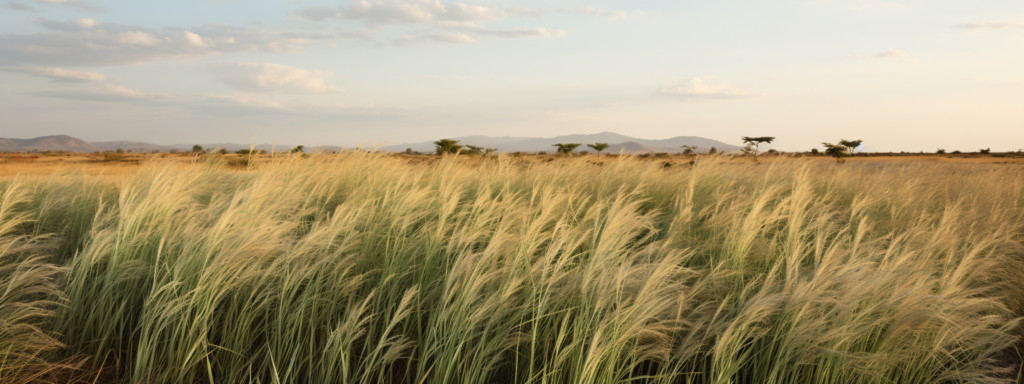In the quest for health and vitality, the globe turns its gaze towards Africa – a continent where the soil holds ancient secrets in the form of superfoods. Fonio, Teff, and Bambara groundnuts are not merely crops but beacons of nutrition and hope for a sustainable future.
Fonio: The Ancient Grain Re-emerging in the Modern Age
Fonio, a grain smaller than a grain of rice, is steeped in tradition yet novel to many palates. Despite its diminutive size, it’s a colossus in the nutritional world, rich in amino acids crucial for human health but often deficient in major cereals. Its resilience against harsh climates makes it not just a food but a symbol of survival and adaptability.

Nutritional Highlights of Fonio
Diving into the health benefits, Fonio emerges as a champion for those with gluten intolerance, offering a gluten-free alternative rich in fibre. Its complex carbohydrates break down slowly, offering a stable energy source without the spikes in blood sugar levels.
Teff: The Ethiopian Power Grain
Teff, Ethiopia’s pride, is a grain that has sustained generations. Its minute size belies its vast nutritional content – rich in calcium, iron, and protein. Teff’s contribution to diet diversity, especially for those with gluten sensitivities, cannot be overstated.
Teff’s Contribution to Health and Cuisine
Teff flourishes in its versatility. Its application ranges from traditional injera to contemporary gluten-free products. It is a gift to the culinary world, infusing dishes with its unique, nutty essence while providing a medley of nutrients essential for strong bones and blood.
Bambara Groundnuts: The Underestimated Legume
Bambara groundnuts, often eclipsed by their more famous legume relatives, are a force to be reckoned with. They are packed with protein, pivotal for muscle health, and carbohydrates, which release energy methodically throughout the day.

The Sustaining Power of Bambara Groundnuts
These groundnuts are more than a nutrient reservoir. They are a testament to resilience, thriving where other crops may falter. As a source of potassium and antioxidants, they play a role in heart health and anti-inflammatory processes.
Sustainable Farming and the Role of Superfoods
These superfoods share a common narrative – they are sustainable crops that can endure and flourish in less-than-ideal soil and climatic conditions. This characteristic positions them as pivotal players in the battle against climate change and food insecurity.
The Environmental Edge
Fonio, Teff, and Bambara groundnuts require minimal resources to grow. This attribute makes them environmentally friendly options, reducing the need for fertilizers and large water supplies. Their place in sustainable agriculture is solid and expanding.
The Global Impact of African Superfoods
The international market’s burgeoning interest in superfoods provides a ripe opportunity for African farmers. Integrating these ancient foods into modern diets opens a channel for economic development and cultural exchange.
Health Implications of African Superfoods
The global community stands to gain immensely from these superfoods. Adopting Fonio, Teff, and Bambara groundnuts can improve health outcomes and diversify the global food basket.
Conclusion: Embracing the Superfoods of Africa
In conclusion, Fonio, Teff, and Bambara groundnuts represent more than food; they symbolize hope, resilience, and the potential for a healthier future. By embracing these superfoods, we enrich our diets and support sustainable practices and economic growth. It’s time these African treasures took their rightful place on the world stage.
References
Sishuba, S. (2019). How African superfoods inspires local Cruz, J. F., & Béavogui, F. (2016). Fonio, an African cereal. CIRAD. agripreneur. Farmer’s Weekly, 2019(19010), 44-466.
Baye, K. (2014). Teff: nutrient composition and health benefits (Vol. 67). Intl Food Policy Res Inst.
Basu, S., Roberts, J. A., Azam-Ali, S. N., & Mayes, S. (2007). Bambara groundnut. In Pulses, Sugar and Tuber Crops (pp. 159-173). Berlin, Heidelberg: Springer Berlin Heidelberg.
Emmambux, M. N., & Taylor, J. R. (2013). Morphology, physical, chemical, and functional properties of starches from cereals, legumes, and tubers cultivated in Africa: A review. Starch‐Stärke, 65(9‐10), 715-729.


